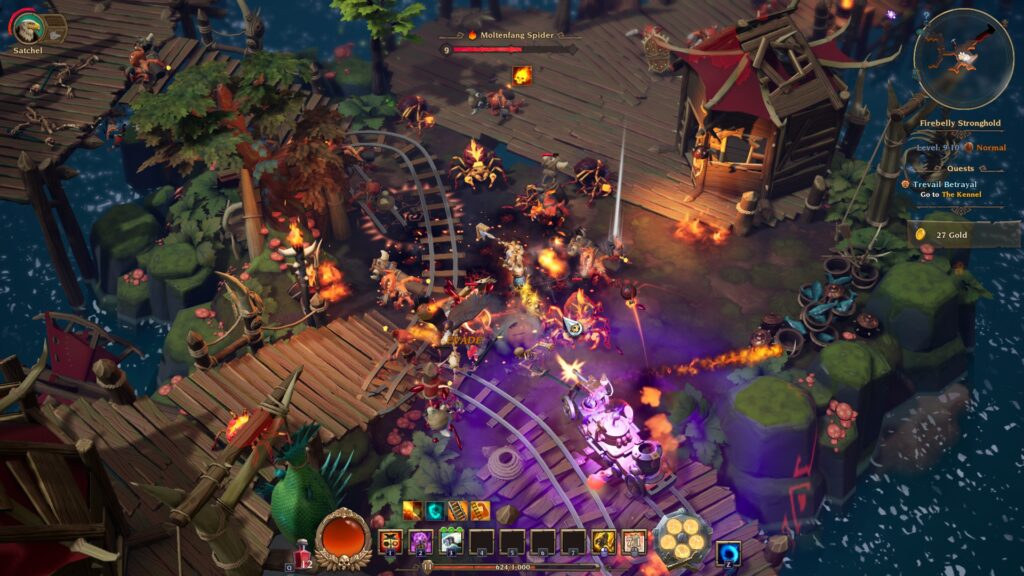
We’ve all seen beloved game studios close down over the years, and as a Torchlight fan, the closure of Runic Games in 2017 was especially sad. The studio was closed a mere month after they released Hob, their third and final game. While Hob received pretty mixed reactions from fans and critics alike, I found it enjoyable enough and hoped that Runic would return to Torchlight in the future.
Even though they had just got through closing down the creators of the franchise, Perfect World Entertainment promised that there were still plans to continue the Torchlight franchise. Those plans would eventually materialize as Torchlight Frontiers, a free-to-play “live service” spin on the franchise that I and many other fans were immediately skeptical of.
Two years later, Frontiers was rebranded to Torchlight III, and the business model was changed to a more traditional pay upfront price. Torchlight III entered Early Access in June of this year, and the reaction from fans was extremely negative.
Most of the Steam reviews complained about extremely simplified mechanics, bugs, the lack of an offline mode even in single player, and dumb mechanics that seem to be the vestigial remains of the game’s original live service business model. Unfortunately, not a whole lot has gotten better since Torchlight III‘s full release.
Torchlight III
Developer: Echtra Inc.
Publisher: Perfect World Entertainment
Platforms: Windows PC (Reviewed), Nintendo Switch, PlayStation 4, Xbox One
Release Date: October 13th, 2020
Players: 1-4
Price: $39.99
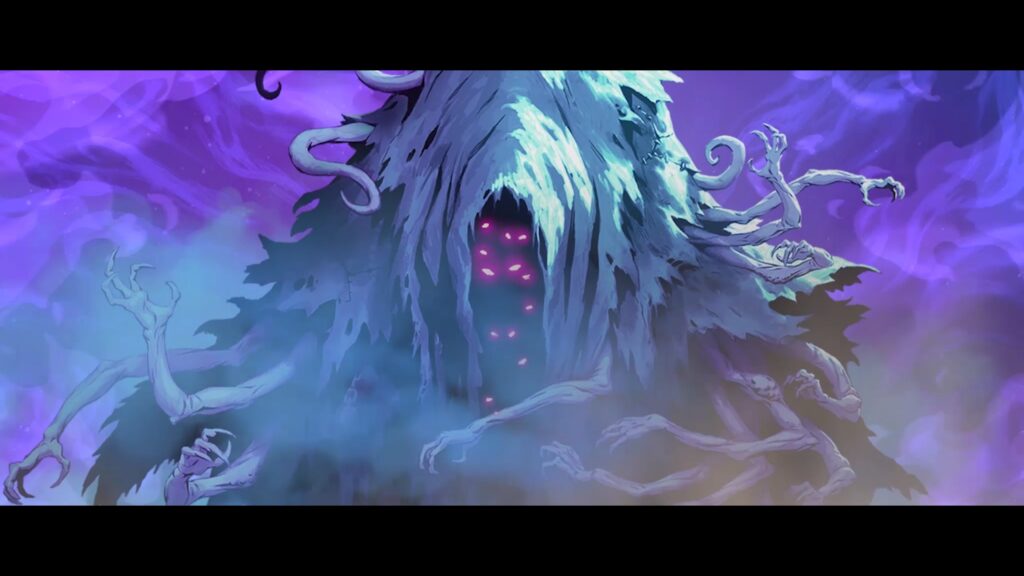
Torchlight III is set roughly a century after the events of Torchlight II. Novastraia is once again threatened by the Netherim, and the world needs another band of heroic adventurers to save it from ruin, all while collecting some legendary loot along the way. Torchlight was never known for its particularly deep lore or storyline, but Torchlight III sets that bar even lower.
The story and mission objectives ultimately boil down to NPC A needs you to go to Location B and kill Boss C, so you can move on to Location D. Occasionally, you’ll need to collect 10 rat poops or some other arbitrary selection of items that are dropped by whacking enemies with a hammer. Don’t expect any interesting quest objectives, or even side quests, because you certainly won’t get them here.
Before you begin questing though, you’ll need to pick from one of the game’s four classes. One thing Torchlight III does pretty well is creating a fairly unique set of classes that don’t fall back on standard mana or stamina meters as the basis for their spells and special abilities. The Forged, for example, is a robot that has skills that build up Heat, and other skills that require you to vent that Heat to perform them.
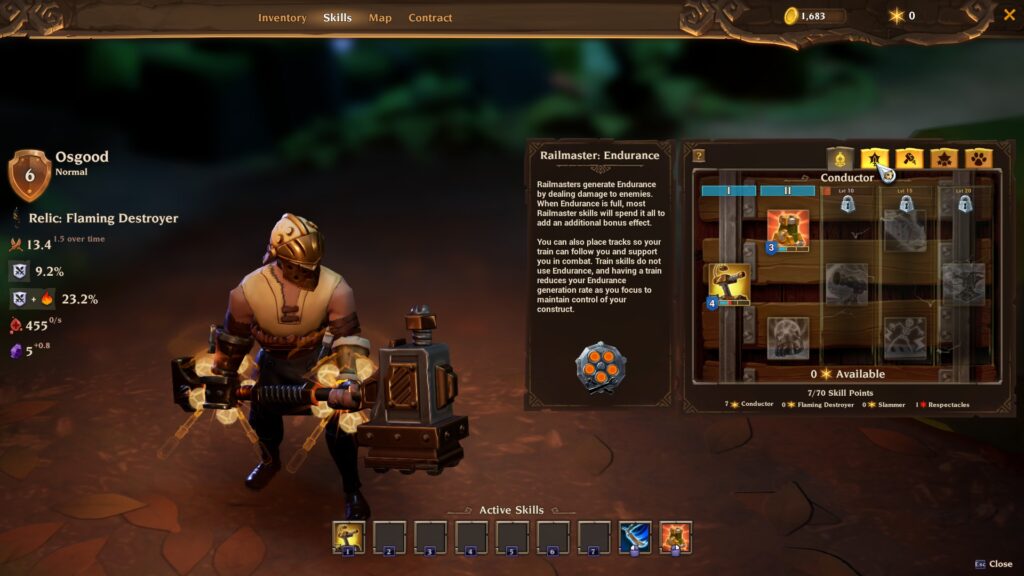
As a fan of pet classes, I spent most of my time with the Railmaster. This melee brawler comes with a rather unique take on the concept of a pet. Instead of something boring like a wolf or pack of skeletons, the Railmaster has a battle train that follows him around. The train consists of a lead car with a basic rapid fire gun, and two more cars that can be customized with mutually exclusive attachments like shotguns, flamethrowers, shields, or mortars.
Each class has two skill blocks that are so anemic you can’t really even call them “trees.” They each consist of about seven skills with three tiers that add new effects or bonuses, and the maximum amount of skill points you can put into most skills is 10. Each skill block generally focuses on one aspect of the character. One of the Railmaster skill sets is for his train companion, and the other is a selection of various melee attacks, with the occasional blasting charge thrown in.
There are no branching paths or sub skills that alter their main skill in some new or interesting way. It’s just a linear selection of skills that are gated behind level increments. The small selection of skills is somewhat alleviated by the addition of Relics. There are five class neutral Relics to choose from that add a third selection of skills to your character. I went with a fire Relic that granted my Railmaster a variety of flashy flame pillars and burning swords to satiate my inner pyromaniac tendencies.
Even still, it just doesn’t feel like Torchlight III has enough skills per class, especially since some of the skills you are putting your points into are passives. Leveling up rarely feels interesting, and character progression overall is really shallow. The game doesn’t even have stats that you can put points into. This makes the early game in Torchlight III especially dull and repetitive.
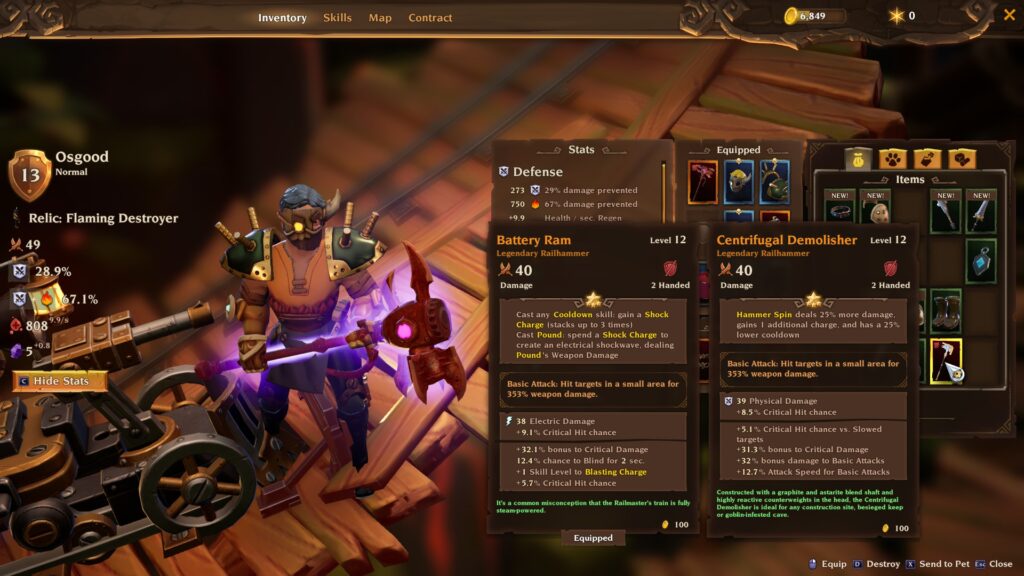
Character progression is extremely simplified in other ways, like the complete exclusion of a gem system. Torchlight is a series known for some interesting builds based on socketing gems into your gear, and to see such a basic feature many games in the genre use excluded from Torchlight III is very disappointing.
In its place is something called Lifebound. These are scrolls that you can use to enchant a piece of magical or rare gear to increase its stats by 20%, but at the risk of losing the item if you die.
This is a pretty boring replacement for a proper gem system, since it’s just stat upgrades instead of adding interesting proc effects or damage types like in previous games. Another fun feature from previous games that got axed is the fishing system, something I spent an embarrassing amount of time doing for such a small side activity.
Luckily, the pet feature returns. The changes made to pets are probably one of the few interesting improvements in Torchlight III compared to older games in the series, as pets are now basically loot drops that come in common, magical, rare, and legendary flavors. The rarity mostly affects what skill the pet comes with by default, but once you’ve acquired a pet with a certain skill, you can freely teach it to other pets.
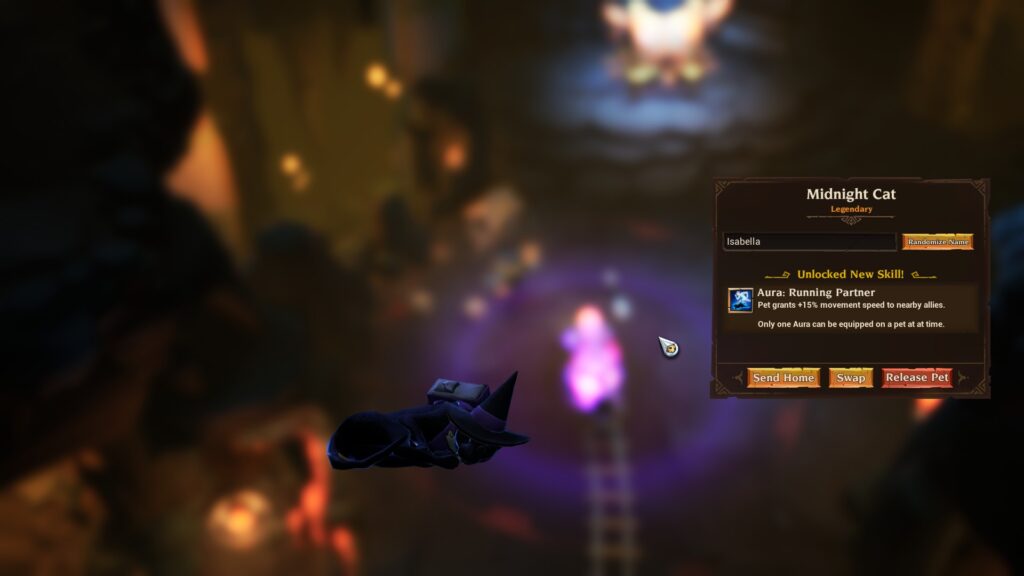
There is a good variety of pets to find as well, including dogs, cats, imps, small dragon-like creatures, llamas, dinosaurs, hawks, owls, and many more I’m probably missing. Each pet can have up to four skills equipped at once that they will autocast during combat, and can be further buffed with a collar and two tags. Sadly, the lack of a fishing system means you can’t feed your pets weird fish that temporarily turn them into monsters with special abilities.
As with previous games, your pets also act as beasts of burden. You can give them excess loot to free up your main inventory, and when its full you can send them back to down to sell it. That said, even with your pet Torchlight III‘s inventory feels really small. It’s been a while since I’ve played the older games, but I’m pretty sure the inventory was more than 20 items.
Your potion slots have also been dramatically reduced, as you can only carry 20 now. That isn’t just health potions either, but all potion types, including antidotes and other elixirs that dispel status aliments.
Torchlight III‘s actual combat is serviceable enough, but rarely did I feel like I was truly having a lot of fun. The game has vibrant visuals like its predecessors, complete with decent enemy variety and flashy spell and attack effects. Enemies tend to explode into meaty chunks from a critical hit, and bosses still shower you with gold and loot, though significantly less than many other games in the genre.
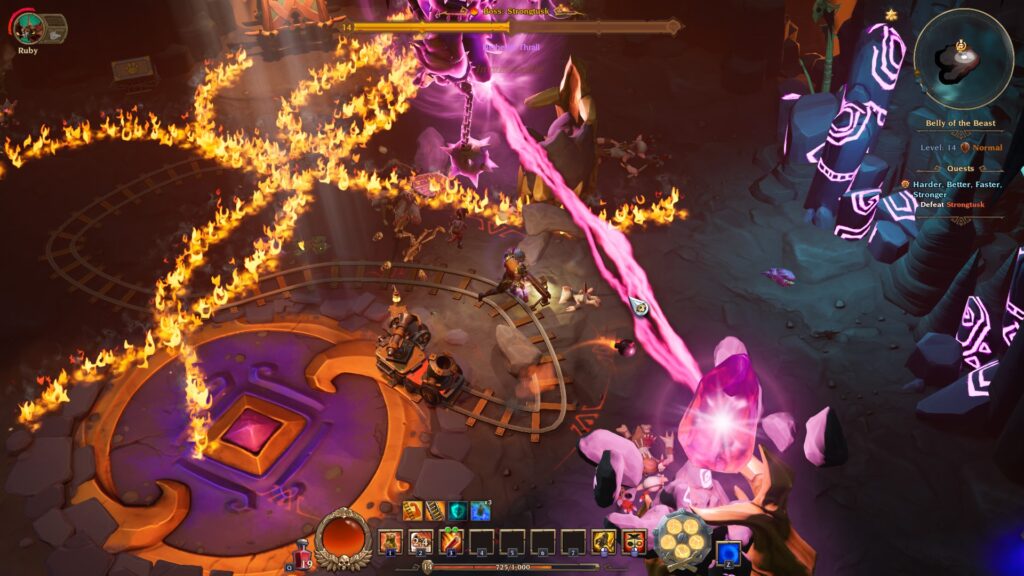
The environments look decent as well, and cover the usual selection of forests, underground cave networks, swamps, and so on. The problem is that the world in Torchlight III just doesn’t feel particularly interesting to explore. Aside from the countless monsters you are slaughtering, the levels feel really barren and lifeless.
Occasionally you might find a short dungeon, a phase beast that lets you fight a previous boss again for better loot, or a mob of procedurally generated elite or legendary enemies. Beyond that though, you won’t find NPCs that send you off on fun side quests, or large optional dungeons containing lots of awesome loot.
In fact, Torchlight III is an extremely linear game, and only really consists of a long series of story quests spaced out across three regions. Beyond the story quests, all that the game really has is an endless endgame dungeon, without anything in the way of optional side content. You will also need to spend a fair amount of time grinding after the story is over because you’ll probably be 15 or so levels below max.
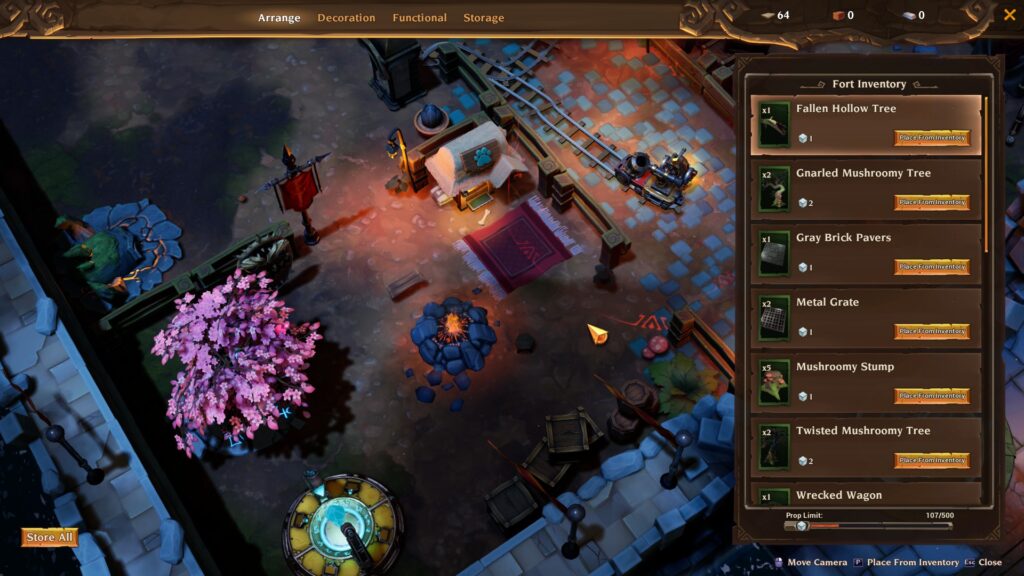
Torchlight III does feature a customizable fort, but it doesn’t really serve much of a purpose. You have a fairly small space that you can decorate with tents, trees, tables, and trophies. I suspect the main reason the fort exists is because its a remnant from the game’s free-to-play live service origins, as some aspects of the fort don’t make much sense otherwise.
You’ll find resources like rocks, wood, and so on throughout the world that can be used to craft decorations at your fort. The fort has some stations that serve an actual purpose, like a pet shelter where you can store unused animal companions, and a player stash.
There are also stations that are used to convert the various resources that you’ll find. The sheer number of resources, the need to convert them, and the timers associated with gathering and converting them feel like free-to-play cow clicker elements from a cheap mobile game.
There are also several structures you can feed various special resources to. The Luck Tree consumes loot to increase your gear luck, while the Crowning Worldgnasher consumes a resource dropped by goblins to increase your fire defense. The only mildly interesting stations at the fort are the item enchanting tables, as the rest require you to dump resources dropped by specific enemy types to gain small percentile increases to elemental defense.
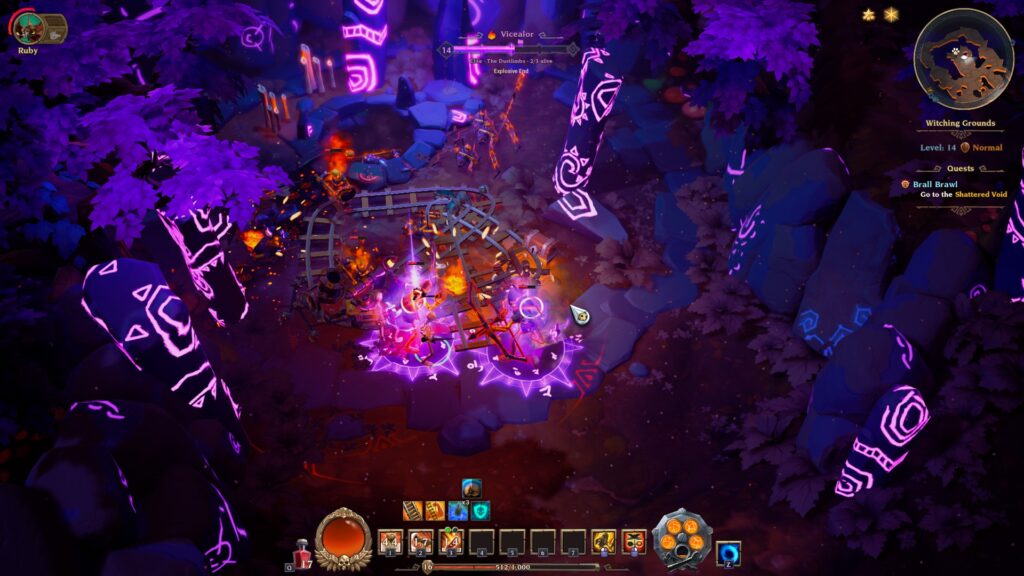
A lot of these systems feel like they were originally designed to be microtransactions. The game’s respec system is another mechanic that feels like its a remnant from its early free-to-play business model, as respecing your character requires you to spend a relatively rare item drop to recover a single skill point at a time.
I’ve heard a lot of people complain that Torchlight III is extremely buggy, though I haven’t encountered the same issues. The most glaring bug I’ve encountered happened after the last patch, which causes all the corpses on the ground to rotate whenever I move my character.
While it’s not a bug per se, I do feel like the pathfinding isn’t especially good in the game. Trying to move around while in combat feels particularly unresponsive, which can get annoying during boss fights when you are trying to dodge the big, telegraphed attacks.
By the time I hit the 12 hour or so mark in Torchlight III, I came to a pretty damning realization: I just wasn’t having much fun. The combat is okay, there are some interesting skills here and there, and some of the legendary loot is cool, but the game overall just feels so uninspired, bland, and boring. I spent a lot of time with the first two Torchlight games, and Torchlight III just feels like a hollowed out husk wearing the franchise’s skin.
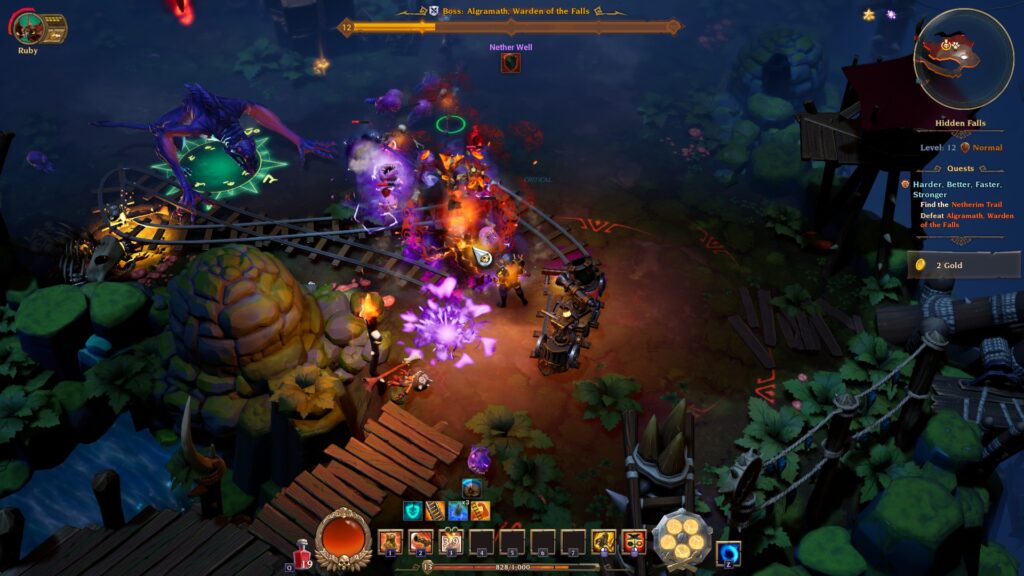
As a standalone game, Torchlight III is a fairly dull but functional entry in a saturated genre dominated by the likes of Grim Dawn, Path of Exile, Diablo III, or even Torchlight II.
As a new installment in a beloved franchise, Torchlight III is a huge disappointment that fails to live up to its predecessors. Torchlight was never a very complicated or deep series to begin with, but Torchlight III strips out so much of that depth and doesn’t really replace it with anything else.
Even if you are absolutely desperate for a new action RPG experience, you are probably better off rolling up another character in Torchlight II or Grim Dawn over buying Torchlight III in its current form.
Torchlight III was reviewed on Windows PC using a review copy provided by Perfect World Entertainment. You can find additional information about Niche Gamer’s review/ethics policy here.